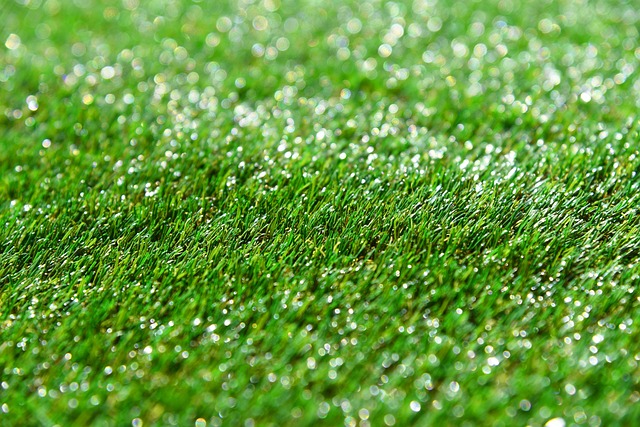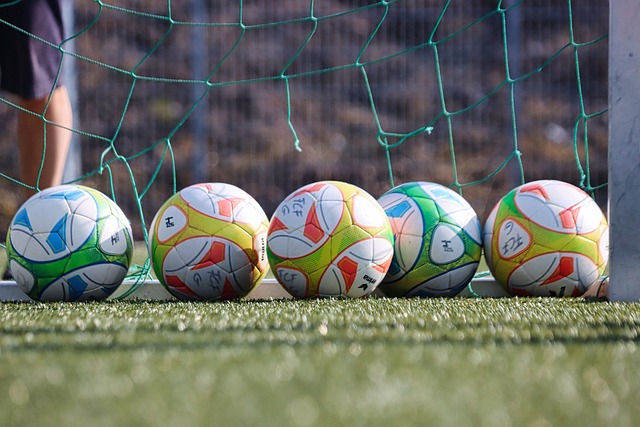Artificial grass offers a low-maintenance, durable, and realistic alternative to natural turf, suitable for various settings including residential gardens, commercial properties, and high-use areas like playgrounds and pet zones. It provides a lush, green surface year-round without the need for watering or extensive upkeep, making it an ideal choice in drought-prone regions or for those prioritizing sustainable water usage. The turf's resilient construction supports significant foot traffic and offers customizable design options to complement any space's aesthetic. It is a cost-effective solution with all-weather durability, replicating the feel of natural grass and offering a practical and visually appealing landscape solution. When installing artificial grass, careful selection of materials, thoughtful design, and attention to drainage are crucial for ensuring a realistic, durable, and well-integrated outcome. Proper maintenance through regular cleaning, strategic infill application, and occasional top-dressing can extend the turf's lifespan. The latest advancements in artificial grass technology include 3D design software for personalization, environmental monitoring sensors, and integration with sustainable practices like solar panel use, further positioning artificial grass as an innovative and eco-conscious choice for modern landscaping needs.
Explore the transformative potential of personalized artificial grass for your home or business. This article delves into the myriad benefits of tailor-made artificial turf, offering a comprehensive guide to designing and installing bespoke systems that cater to unique spaces. From innovative maintenance strategies ensuring longevity to the latest trends in turf design and personalization, enhance your outdoor areas with functional, durable, and aesthetically pleasing solutions. Embrace the convenience and customization of artificial grass, transforming any environment into a lush, vibrant oasis.
- Understanding the Benefits of Personalized Artificial Turf for Your Home or Business
- Key Factors to Consider When Designing Your Custom Artificial Grass Layout
- Step-by-Step Guide to Planning and Installing Your Bespoke Artificial Turf System
- Innovative Maintenance Strategies for Long-Term Durability of Artificial Grass
- Exploring the Latest Trends in Artificial Turf Design and Personalization Options
Understanding the Benefits of Personalized Artificial Turf for Your Home or Business

Incorporating personalized artificial turf into your home or business offers a myriad of advantages that enhance both functionality and aesthetics. Artificial grass, unlike its natural counterpart, requires no maintenance; it remains lush and green year-round without the need for watering, mowing, or fertilizing. This low-maintenance feature is particularly beneficial in areas prone to drought or where irrigation systems are not feasible. Additionally, artificial turf is designed to withstand heavy foot traffic, making it an ideal solution for high-usage spaces such as play areas, pet runes, or commercial entryways, ensuring a consistently pristine appearance. The durability and versatility of this synthetic surface also mean it can be customized to fit unique design elements, blending seamlessly with your environment or brand identity.
Opting for personalized artificial turf solutions can significantly reduce long-term costs associated with landscape upkeep. As a cost-effective alternative, it provides a return on investment by eliminating the expenses related to traditional grass maintenance. Furthermore, its all-weather resilience means that it can endure various climatic conditions without degradation, ensuring a long-lasting and economical choice for both residential and commercial settings. The synthetic fibers are engineered to mimic natural grass, offering a realistic feel underfoot and the visual appeal of a well-manicured lawn or sports area, all tailored to your specific preferences and requirements.
Key Factors to Consider When Designing Your Custom Artificial Grass Layout

When embarking on a project involving artificial grass, several key factors must be considered to ensure the layout complements your space effectively. The choice of turf material is paramount; high-quality turf will provide a durable and realistic surface that withstands wear and tear. Take into account the intended use of the area—whether for recreational purposes, pet activities, or low-maintenance landscaping—as this will influence the type of turf fibers and infill required. Drainage is also critical; opt for permeable ground padding beneath the artificial grass to facilitate water runoff and prevent pooling, ensuring safety and longevity of your installation. Additionally, consider the layout’s aesthetic appeal, selecting colors and designs that harmonize with your property’s overall design scheme. Proper edge restraints are necessary to keep the turf in place and maintain a clean and polished look. These elements combined will create a custom artificial grass layout that is both functional and visually pleasing, enhancing your outdoor living space or commercial property effectively.
Incorporating the right accessories can further personalize your artificial grass setup. Choices such as borders, infill options, and even built-in lighting or drainage systems contribute to the overall functionality and design. Borders not only define the edge of your turf but also prevent shifting and promote a clean border between different surfaces. Infill materials like sand or rubber granules enhance the stability and comfort underfoot, while also aiding in the turf’s drainage capabilities. By carefully selecting each component, you can achieve a bespoke artificial grass layout that caters to your specific needs and preferences, ensuring that your investment is both durable and delightful for years to come.
Step-by-Step Guide to Planning and Installing Your Bespoke Artificial Turf System

When contemplating the installation of a bespoke artificial turf system, careful planning and precise measurements are paramount. Begin by assessing the intended area where the artificial grass will be laid. Use a measuring tape to calculate the dimensions accurately, accounting for any slopes or irregularities in the terrain. This meticulous approach ensures that the synthetic turf fits seamlessly into your outdoor space, providing a natural-looking and durable surface.
Once the area is measured, select the type of artificial grass that best suits your needs and preferences. Consider factors such as the intended use, foot traffic, and aesthetic desires. High-traffic areas might benefit from more resilient turf varieties, while decorative or low-use spaces can opt for a more delicate, yet still durable, option. The chosen material should align with both your practical requirements and visual expectations for a visually appealing, long-lasting result.
After selecting the perfect artificial grass, proceed with the installation process. Begin by preparing the base; clear the area of debris and level the ground as much as possible to ensure proper drainage and an even surface. Next, install a geotextile membrane to prevent weed growth and enhance the longevity of your turf. Finally, lay down a shock pad or foam underlay for added cushioning and impact absorption, particularly if the area will see significant foot traffic or activity. With these steps, you can achieve a professional-grade artificial grass installation that mimics the natural look and feel of real turf, with the added benefits of low maintenance and year-round beauty.
Innovative Maintenance Strategies for Long-Term Durability of Artificial Grass

Synthetic turf has become an increasingly popular choice for both residential and commercial landscapes due to its low maintenance requirements and durability. To ensure the long-term durability of artificial grass, property owners should implement innovative maintenance strategies that cater to the specific environmental conditions and usage patterns of their turf. Regularly scheduled inspections can detect any damage or wear early on, allowing for prompt repairs that prevent further degradation. The use of specialized cleaning tools, such as soft-bristled brushes or rakes, can effectively remove debris like twigs and leaves without damaging the fibers, maintaining the turf’s appearance and performance over time. Additionally, strategic placement of infill materials, like sand or rubber granules, helps to support the artificial grass structure, enhancing its longevity by providing cushioning against foot traffic and environmental elements.
Maintaining artificial grass involves not only regular upkeep but also understanding the role of infill materials in preserving the turf’s integrity. Infill plays a crucial role in keeping the artificial blades upright, ensuring proper drainage, and providing shock absorption for activities on the turf surface. To maximize the lifespan of your turf, it is advisable to top-dress the infill annually, as this can rejuvenate the turf’s appearance and stability. Further, employing a monthly hose-down with water can prevent the buildup of dirt and contaminants that might compromise the turf’s resilience. By integrating these proactive strategies into your maintenance routine, you can extend the life of your artificial grass significantly.
Exploring the Latest Trends in Artificial Turf Design and Personalization Options

Artificial grass technology has made significant strides, offering homeowners and businesses an array of personalized design options that mimic natural turf with unprecedented realism. The latest trends in artificial turf design are characterized by their customizability, allowing for tailored aesthetics to complement any environment, from residential backyards to commercial spaces. Innovative fibers and advanced infill materials contribute to the enhanced texture and resilience of these surfaces, ensuring durability while providing a soft, safe play area. With the advent of 3D design software, clients can visualize their custom turf before installation, making choices about blade shape, color intensity, and even the thickness of the thatch layer for a truly bespoke experience.
In addition to visual appeal, the functionality of artificial grass continues to evolve. Smart turf options now include integrated sensors for monitoring weather conditions or soil moisture levels, which can be particularly beneficial for maintaining pristine conditions in high-traffic areas. The integration of renewable energy sources, like solar panels, into the substructure of artificial turf systems is also gaining momentum, aligning with sustainability goals and offering an eco-friendly solution that conserves water and reduces maintenance needs. These advancements in artificial grass not only elevate outdoor spaces but also pave the way for smarter, more sustainable landscaping solutions.
When contemplating enhancements for your home or business exterior, personalized artificial grass stands out as a versatile and low-maintenance solution. By tailoring your synthetic turf to your specific needs and preferences, you not only elevate the aesthetic appeal but also reap the enduring benefits it offers. Whether you’re envisioning a lush, green space for relaxation or a durable, low-upkeep area for high foot traffic, custom artificial grass plans are designed with both functionality and style in mind. With careful planning, as outlined in our comprehensive guide, and regular maintenance, utilizing the latest strategies to ensure longevity, your bespoke turf system can remain a vibrant and attractive feature for years to come. Embrace the transformative potential of artificial grass and turf solutions to create a unique, tailored outdoor space that reflects your individuality and meets your specific requirements.
